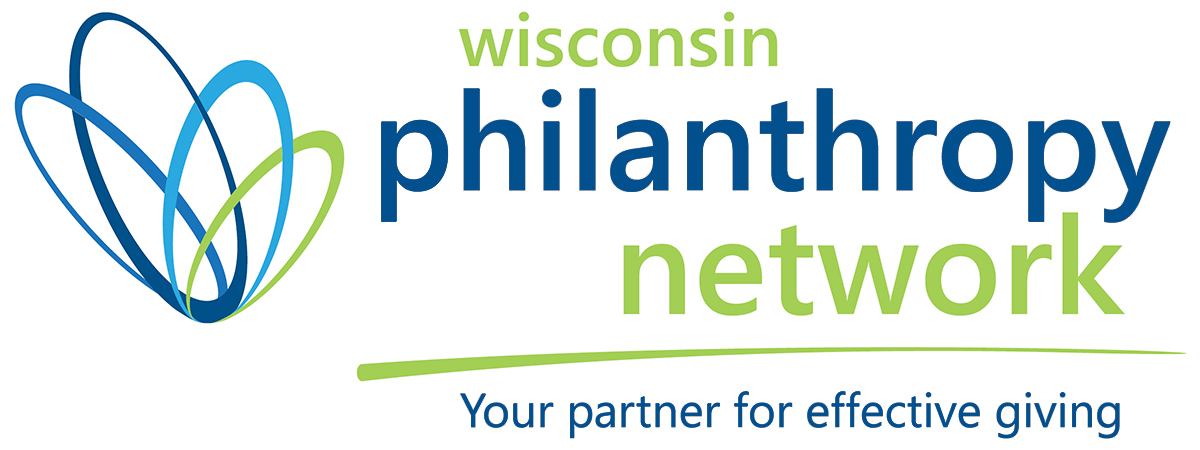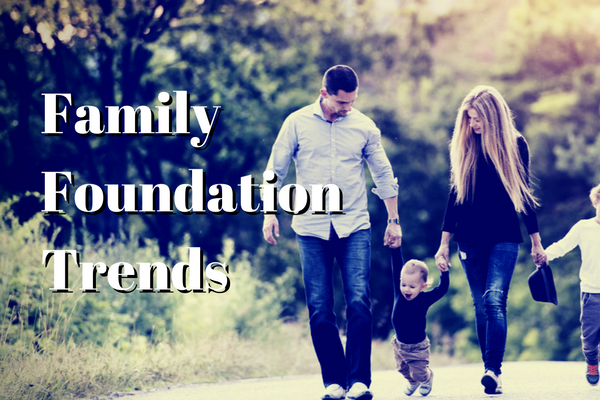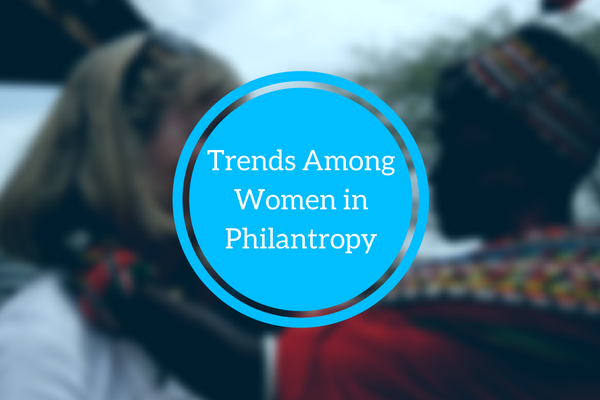With the year more than half over, Wisconsin Philanthropy Network thought it would be a good time to take a peek at which trends and philanthropists were predicted to have an impact this year. In January, David Callahan, editor at Inside Philanthropy, created a list of trends and people to watch. Click on the link below to take a look at his list and stay on top of what’s happening in the philanthropic world.
Click here to go to the original source
Philanthropy Forecast, 2016: Trends and Funders to Watch
by David Callahan
We recently took a look back at 2015 with our Philanthropy Awards that chronicled the year’s highs, along with a few lows. Now we cast an eye forward, to what 2016 may bring. Here’s our list of the trends and funders we’ll be paying attention to in the coming year. Follow the links to IP articles to dig deeper.
Trends to Watch
Falling Trust in Philanthropy—Last year saw a backlash to the Chan/Zuckerberg announcement, myriad negative news stories on the Clinton Foundation, and ridicule heaped on nine-figure gifts by John Paulson and David Geffen. After years of growing populism and distrust of elites, maybe the real surprise is that philanthropy is only now starting to draw major fire. Get ready for more to come.
Politicized Giving—Funders keep getting more savvy about using “charitable” giving to sway electoral outcomes. Pay close attention in this election year and you’ll see, for example, how grant dollars are used to boost or depress voter turnout among key groups. At a larger level, 2016 will showcase how the wealthy are growing more polarized.
Impact Investing—Looking past the hype, we’ll be watching to see what actual movement there is among foundations to embrace impact investing. While Omidyarism may be conquering the new world of tech philanthropy, blurring lines within the sector, it’s so far been a different story among legacy foundations.
Fossil Fuel Divestment—On the other hand, we stand by our prediction that the dominoes will soon start falling when it comes to foundations divesting from fossil fuels.
Lean Philanthropy—New donors will continue to have less interest in staffing up their own foundations thanks to the rise of full-service philanthropy shops within the finance world, like at JPMorgan Chase, along with places like Foundation Source and a maturing ecosystem of intermediaries like NEO Philanthropy.
Donor-Advised Funds—You don’t need a crystal ball to know that 2016 will be another boom year for DAFs, as they continue to draw armies of new donors thanks to their convenience. But maybe it will also be the year that DAF critics get traction with federal policymakers.
Tech Philanthropy—As wealthy tech philanthropists like Mark Zuckerberg urge their peers to give more and earlier in life, look to this sector to continue to lead the new philanthropy in 2016. Unless, that is, the tech bubble bursts.
The Giving Pledge—The most important fundraising push in history is almost certain to keep attracting new signatories this year, including more younger donors and overseas billionaires.
Inequality—Last year’s conversation about inequality seems likely to fade, since few major funders—Ford aside—are much interested in challenging contemporary capitalism in a confrontational way. Still, keep an eye on a few interesting big picture efforts, like this and that.
Economic Inclusion—Meanwhile, watch for the acceleration of narrower and safer grantmaking that aims to raise the fortunes of low-income people through asset building, workforce development, and STEM education. A great example: Rockefeller’s employment work.
Cities—We’ve reported on a ton of urban-focused philanthropy in the past two years, and expect funders to remain excited in 2016 about boosting cities and also addressing big problems like climate change at this level.
Post-Reform Ed Philanthropy—Signs exist that ed philanthropy has been moving into new terrain, away from the polarizing debates on choice and accountability of the past decade. A mirage? Perhaps. We’ll keep watching the horizon.
Criminal Justice Reform—This funding area was on fire in 2015, fueling a push to roll back harsh and destructive policies enacted decades ago. We’re betting that more major funders will join the fight in 2016.
Women and Girls—Global development funders have long understood the importance of empowering women and girls. Look for more domestic U.S. funders to adopt this idea in 2016, building on new work begun last year.
The Great Health Crusade—This year will likely see growing momentum behind an ambitious effort by an array of funders to improve public health and the efficiency of America’s dysfunctional $3 trillion healthcare system.
Dementia and Diabetes—While we’re on the topic of health, here’s another prediction: Yet more big money will go toward the twin healthcare cataclysms now predicted as a result of dramatic rises in neurodegenerative diseases and diabetes.
Climate Change—We’ve been beating the drum for funders to put much bigger resources into the climate fight given how fast the clock is ticking. Our bet is that at least one new mega-donor will jump into this space in a game changing way in 2016.
Campus to Career—Various higher ed donors are increasingly worried that too many kids leave college without strong career prospects. We saw a string of gifts addressing that challenge in 2015 and expect more this year, including yet more funding for entrepreneurship programs.
Philanthropists to Watch
Steve and Connie Ballmer—The former Microsoft CEO and his wife, who control one of America’s largest tech fortunes, have stepped up their giving. Now we’re waiting for them to unveil a larger plan.
Michael Bloomberg—For all his big giving, Bloomberg isn’t moving money fast enough to make a real dent in his $35 billion fortune. Expect Mike to keep ramping up in 2016.
The Buffetts—We’ll say it again: This is the most powerful family in U.S. philanthropy, and plenty of Buffett money is not going to Gates. Keep a close eye on what Warren’s three kids are up to as they collectively give away over $800 million a year.
Steve and Alex Cohen—The couple has made a string of large gifts, drawing on a vast hedge fund fortune that’s only grown since an insider trading probe. Where’s it all leading?
Ray and Barbara Dalio—The hedge funder and his wife are among the most important philanthropists to emerge from Wall Street in years. It seems only a matter of time before a more professionalized and transparent grantmaking operation materializes.
Jack Dorsey—Last fall, the billionaire chief of Twitter and Square set aside a big chunk of stock to create a new foundation. We’ll be interested to see what comes next.
Judy Faulkner—She made her billions in healthcare IT systems. Now, the recent Giving Pledge signatory is turning to philanthropy in a bigger way. She exemplifies the growing clout of independent women donors.
Bill and Melinda Gates—The Gateses are broadening their agenda. They’re embracing early childhood education funding at a larger level, and Bill recently put together a new energy coalition. Remember, this couple still has nearly $80 billion sitting on the sidelines.
Lyda Hill—The Dallas oil heiress and entrepreneur has shown she has an ambitious philanthropic vision. This is another powerful woman donor we’ll be watching in 2016.
Brad and Kim Keywell—These recent signatories of the Giving Pledge exemplify a younger generation of donors intent on leveraging their wealth to achieve “creative disruption.”
Seth and Beth Klarman—Another Giving Pledge couple that’s worth keeping an eye on as they step things up, both with national giving and wide-ranging funding in Boston.
Jan Koum—The WhatsApp co-founder put over a half-billion dollars into a donor-advised fund after selling his company to Facebook, and has billions more. But what causes will he favor?
Laurene Powell Jobs—Her giving has long been super-opaque, but she’s lately emerged as a more public philanthropic leader with a plan to reinvent high school. She has a $19 billion fortune. What’s next?
Gordon and Betty Moore—These Giving Pledge signatories—well into their 80s—are sitting on a $6.8 billion Intel fortune. Is this the year that the bulk of that money finds its way to the foundation that bears their name and is already among the biggest in the U.S.?
Sean Parker—The tech leader made waves last year with his manifesto on “philanthropy for hackers,” and a $600 million gift to his foundation. We’ll be watching to see how he operationalizes his ideas.
The Walton Family—They’ve only given away the tiniest fraction of their vast inherited fortunes, but a recent donation of over $400 million suggests the spigot may open more widely.
Mark Zuckerberg and Priscilla Chan—Just how fast will all that Facebook wealth flow for grants and impact investments? And how much will the couple expand their agenda beyond their core causes of education and health? Some answers are sure to come in 2016.
Foundations to Watch
We never get bored watching the Laura and John Arnold Foundation as it tackles one hot issue after another. Most interesting is its wide-ranging, and perhaps quixotic, quest to advance evidence-based policymaking.
This is the year that the Atlantic Philanthropies finally wraps things up. Look for fireworks as it dumps its final loads of money overboard through more giant “culminating grants.”
We can think of two reasons to keep tabs on the Barr Foundation: It’s one of the more sophisticated regional funders around, and it’s been engaged in a strategic review, including of its climate change funding.
Another local foundation we watch closely is the Colorado Health Foundation, whose work exemplifies the creative new approaches funders are taking to healthcare. Ditto, by the way, for the California Endowment.
Now that the Ford Foundation has finished its strategic review, and the big decisions have been made, a lot of people will be watching to see how this translates into day-to-day grantmaking. Another question mark: Whether Ford will move into impact investing in a big way.
Good Ventures continues to be one of the most fascinating works in progress in the foundation world, backstopped by a $9 billion Facebook fortune. It’s starting to make some bold and big bets. Look for more to come.
With an agenda that includes the environment and education, not to mention a line into one of America’s largest hedge fund fortunes, expect the Heising-Simons Foundation to grow more interesting and visible.
The Conrad N. Hilton Foundation doesn't just have a new president, Peter Laugharn, it's set to double its assets at some point, to around $5 billion, thanks to a bequest from Barron Hilton. Look for this place to sharpen its priorities in 2016.
The JPB Foundation has huge assets, big ambitions, and nearly no public profile. We’re thinking that 2016 is the year that the curtain gets pulled back on this important operation.
Last year the MacArthur Foundation streamlined grantmaking and made some new big bets. But the story of a hard-charging CEO revitalizing a legacy foundation is still unfolding.
If you don’t work on global development, The MasterCard Foundation won’t be on your radar. It’s an increasingly important funder with very deep pockets and ambitious ideas for reducing global poverty.
The Nathan Cummings Foundation has modest resources relative to the huge challenges it's tackling, climate change and inequality. How will its promising new president, Sharon Alpert, align NCF’s ambitions with its assets?
The Nellie Mae Foundation recently unveiled an ambitious plan to reinvent K-12 education for the 21st Century, focusing on New England. We’ll be watching to see how that goes.
A billionaire heir to the Gap fortune is fueling the Pisces Foundation, which has lately emerged as one of the more notable new funders on the environmental scene.
The S&G Foundation is the most well-endowed foundation you’ve never heard of, with around $1 billion in assets. What are its founders—Shelby MC Davis and his wife Gale—going to do with all that money? We might ask the same question about another low-profile billion dollar outfit, the Brin Wojcicki Foundation.
The Harold Simmons Foundation was created with the fortune of a late billionaire GOP mega-donor, but it’s controlled by two heirs with progressive views and is still sorting itself out. Stay tuned.




